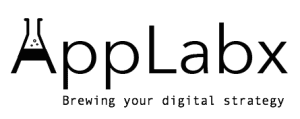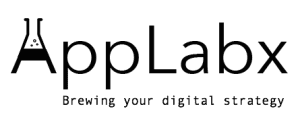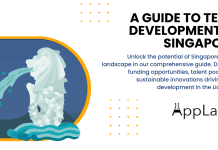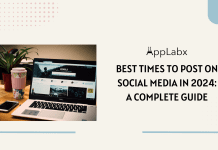Key Takeaways
- Vietnam’s digital economy is rapidly expanding, fueled by hyperlocal SEO, AI-powered personalisation, and social commerce innovation.
- Short-form video, livestream marketing, and ESG branding are reshaping consumer engagement and loyalty in key sectors.
- These digital marketing trends present high-growth, scalable investment opportunities across martech, e-commerce, and sustainable platforms.
Vietnam is fast becoming one of Southeast Asia’s most promising digital economies. With internet penetration exceeding 79% and over 78 million users actively online by 2024, the nation is experiencing a digital transformation at unprecedented speed. The digital marketing sector alone was valued at approximately USD 1.64 billion in 2024 and is projected to grow at a compound annual growth rate (CAGR) of 12% through 2033. These numbers are not just impressive—they are signaling a strong foundation for long-term, scalable investment opportunities between 2025 and 2030.

Driving this momentum is the Vietnamese government’s ambitious vision for a fully digital society. The National Digital Transformation Program aims to digitize public services, implement nationwide digital IDs, and provide full 5G and fiber optic coverage. This aggressive rollout of infrastructure has laid the groundwork for startups, SMEs, and multinationals to flourish in Vietnam’s increasingly connected economy. As a result, digital services—from fintech to martech—are seeing explosive adoption across sectors ranging from retail and logistics to education and entertainment.
For more investment news and stats, click over to Invest in Vietnam, the premier blog for investment strategies in Vietnam.
One of the clearest indicators of opportunity is the explosive rise in e-commerce and digital payment platforms. Mobile wallets like MoMo, ZaloPay, and VNPay have become integral not just for transactions, but also as enablers of social commerce. Vietnamese consumers are now seamlessly integrating online shopping into social platforms like Facebook, TikTok, and Zalo. This social-first, mobile-first behavior is shaping a digital ecosystem where brands, influencers, and buyers converge in real time—redefining both marketing tactics and retail logistics.
In parallel, social commerce is on a steep upward trajectory. Valued at approximately USD 5 billion in 2025, this sector is projected to double by 2030, with an expected CAGR of over 15%. Live-stream selling, creator-led content, and peer recommendations are becoming the preferred mediums for product discovery and conversion. Vietnamese Gen Z and Millennial audiences, which make up the majority of the consumer base, are highly receptive to short-form video, influencer marketing, and immersive mobile experiences. For investors, this marks a golden opportunity to back agencies, platforms, and technologies that specialize in these emerging formats.
Another trend reshaping Vietnam’s digital economy is the rapid adoption of AI in marketing. Around 89% of Vietnamese businesses—particularly SMEs—have begun leveraging artificial intelligence for chatbots, predictive analytics, automated content generation, and smart ad placements. AI-powered personalisation is helping brands create tailored user experiences at scale, boosting engagement and conversions. This digital evolution is drawing increasing attention from investors keen on AI-driven martech solutions, SaaS tools, and customer data platforms designed specifically for fast-growing Asian markets.
Moreover, the rise of green marketing and purpose-driven branding is creating a unique convergence between ethics and profitability. Vietnamese consumers are becoming more environmentally and socially conscious, compelling brands to embrace sustainability narratives. Whether it’s through eco-friendly packaging, local community engagement, or carbon-offset e-commerce platforms, the demand for authenticity and accountability is growing. As ESG principles integrate into marketing and business models, investors have a chance to support and scale brands that align with this purpose-first shift.
In summary, Vietnam’s digital marketing ecosystem between 2025 and 2030 will be defined by innovation, local relevance, and regional scalability. Whether you’re a venture capitalist eyeing high-growth startups or a corporate investor seeking expansion in Southeast Asia, understanding the digital marketing trends that drive consumer behavior and technological adoption is essential. The following sections explore the top five trends that are not only reshaping marketing in Vietnam—but also unlocking lucrative investment opportunities in one of Asia’s fastest-growing digital frontiers.
Vietnam’s Digital Landscape in 2025: An Overview
Vietnam’s digital ecosystem in 2025 represents one of Southeast Asia’s most dynamic, investment-ready environments. With a tech-savvy population, growing middle class, robust digital infrastructure, and supportive government policies, the country is becoming a regional hub for digital innovation and transformation. This section breaks down the key components of Vietnam’s digital maturity in 2025 and outlines where the greatest opportunities for investors and marketers lie.
Internet Penetration and Mobile Connectivity
National Reach
- Over 79% internet penetration as of 2025, with more than 78 million active users.
- Mobile-first usage dominates: over 98% of users access the internet via smartphones.
- Rural and Tier-2 cities see rising connectivity due to government-funded 5G rollouts.
Key Platforms & Tools
- Zalo: Vietnam’s most-used local messaging app, integrated with shopping, banking, and official services.
- TikTok & Facebook: Among top platforms for entertainment and commerce.
- Shopee, Tiki, Lazada: E-commerce giants capitalizing on mobile-first user behavior.
Chart: Internet Access by Device Type (2025)
| Device Type | Usage Share (%) |
|---|---|
| Smartphones | 92.4 |
| Laptops/Desktops | 43.1 |
| Tablets | 17.5 |
| Smart TVs | 12.9 |
Source: Vietnam Digital 2025 Report
Government Initiatives Powering Digital Growth
National Digital Transformation Program
- Goal: Fully digitalized government and economy by 2030.
- Key areas of focus:
- Digital ID system (e-ID adoption surpassing 65% of population).
- Smart cities initiatives in Hanoi, Ho Chi Minh City, and Da Nang.
- Subsidies for cloud infrastructure and cybersecurity development.
Regulatory Modernization
- Introduction of Data Protection Laws (modeled after GDPR).
- Tax incentives and funding grants for tech startups and digital service exporters.
- Public-private partnerships in AI, martech, and fintech research.
E-Commerce and Fintech Expansion
E-Commerce Surge
- Market projected to surpass USD 16 billion by end of 2025.
- Primary growth drivers:
- Increased use of social commerce (TikTok Shop, Facebook Marketplace).
- Logistics modernization and last-mile delivery improvements.
- Young population driving impulse purchases via mobile apps.
Top E-Commerce Platforms in Vietnam
| Platform | Estimated Market Share (2025) |
|---|---|
| Shopee | 36% |
| Lazada | 25% |
| TikTok Shop | 18% |
| Tiki | 12% |
| Others | 9% |
Fintech Penetration
- Over 70% of the adult population using digital wallets and mobile banking.
- Fintech applications dominating payments, insurance, and lending.
- Rise of Buy Now, Pay Later (BNPL) models integrated within e-commerce flows.
Popular Digital Wallets
- MoMo: Leading wallet with 31 million users.
- ZaloPay: Integrated with messaging and e-commerce.
- VNPay: Strong penetration in government and utility payments.
Matrix: Digital Payment Ecosystem
| Category | Platform | Primary Function | Notable Feature |
|---|---|---|---|
| Wallet App | MoMo | Peer-to-peer + retail payments | Loyalty programs, cashback |
| Super App Wallet | ZaloPay | Messaging + e-payments | Tied to social & Zalo ecosystem |
| Bank-integrated | VNPay | QR payments, bill pay | Government & bank partnerships |
| BNPL Service | Fundiin, Kredivo | Pay-in-installment online | Embedded in e-commerce platforms |
AI, Martech, and Data-Driven Marketing Boom
AI Adoption in Marketing
- 89% of Vietnamese businesses using AI in at least one marketing function.
- Common uses include:
- Chatbots for customer service (e.g., FPT AI Assistant).
- Predictive analytics for campaign planning.
- AI-generated ad copy and content personalization.
Martech Stack Expansion
- Rise in local SaaS platforms offering CRM, email automation, and A/B testing tools.
- Integration of CDPs (Customer Data Platforms) to unify cross-channel insights.
- Local demand for privacy-compliant tools is rising due to new data laws.
Table: Most Popular Martech Tools Used in Vietnam (2025)
| Martech Category | Top Tools Used |
|---|---|
| CRM | Zoho CRM, Getfly, Salesforce |
| Email Automation | Mailchimp, Topica Email Suite |
| Social Scheduling | Hootsuite, Buffer, Novaon |
| Analytics & Heatmaps | Google Analytics, Hotjar, Matomo |
| AI Content Generation | GPT-based tools, Writesonic VN |
Digital Talent and Workforce Trends
Talent Landscape
- Over 1.5 million workers employed in digital, IT, and marketing roles.
- Emergence of digital-first universities and training programs.
- Demand outpacing supply in key areas:
- Performance marketing
- SEO/SEM specialists
- Data analysts and AI engineers
Startup Ecosystem
- Ho Chi Minh City ranks among the top 3 startup ecosystems in ASEAN.
- Startups focused on:
- Martech and adtech
- Social commerce logistics
- AI-based SaaS tools for SMEs
Key Takeaways
- Vietnam’s 2025 digital environment is driven by high mobile adoption, government-backed transformation, and young consumer behavior.
- The surge in AI, fintech, martech, and social commerce offers multi-sector investment angles.
- With the right strategy, investors can tap into a scalable and fast-growing ecosystem that’s still in the early stages of its digital maturity.
But, before we venture further, we like to share who we are and what we do.
About AppLabx
From developing a solid marketing plan to creating compelling content, optimizing for search engines, leveraging social media, and utilizing paid advertising, AppLabx offers a comprehensive suite of digital marketing services designed to drive growth and profitability for your business.
At AppLabx, we understand that no two businesses are alike. That’s why we take a personalized approach to every project, working closely with our clients to understand their unique needs and goals, and developing customized strategies to help them achieve success.
If you need a digital consultation, then send in an inquiry here.
Top 5 Digital Marketing Trends Driving Investment Opportunities in Vietnam (2025-2030)
- Hyperlocal SEO & Vietnamese-Language Content
- AI-Powered Personalisation & Martech Adoption
- Social Commerce Boom on Zalo, TikTok, and Facebook
- Short-Form Video & Livestream Marketing
- Green Marketing & Purpose-Driven Branding
1. Hyperlocal SEO & Vietnamese-Language Content
As Vietnam’s digital ecosystem evolves, hyperlocal SEO and Vietnamese-language content are becoming foundational pillars of successful digital marketing strategies. With nearly 90 million Vietnamese speakers and a strong preference for local content, businesses that prioritize language-specific search optimization and regional targeting gain a significant competitive edge. This shift is driven by the growing accessibility of localised digital tools, changing consumer behavior, and the dominance of local search platforms like Google Vietnam, Cốc Cốc, and Zalo.
The Rise of Local Search Behavior
Consumer Search Trends
- Over 70% of users perform searches with local intent (e.g., “near me”, “gần tôi”, district-specific queries).
- Voice search in Vietnamese is rising due to smartphone adoption and AI-powered virtual assistants.
- Vietnamese consumers prefer brands with native-language websites, reviews, and location-specific services.
Local SEO Factors Gaining Importance
- Google My Business listings optimised with Vietnamese business names and categories.
- Zalo Business Profiles as trusted local directories with messaging and reviews.
- Region-based landing pages (e.g., “dịch vụ SEO tại Đà Nẵng” vs. “dịch vụ SEO tại TP.HCM”).
Table: Search Intent Comparison (English vs Vietnamese Keywords)
| Keyword Phrase | Monthly Searches (2025) | CTR (%) | Conversion Rate (%) |
|---|---|---|---|
| “Best marketing agency Ho Chi Minh” | 1,300 | 4.2 | 1.1 |
| “Công ty marketing tốt nhất TP.HCM” | 8,500 | 7.8 | 4.5 |
| “SEO agency near me” | 2,000 | 3.6 | 0.9 |
| “Dịch vụ SEO gần tôi” | 5,900 | 6.9 | 3.7 |
Vietnamese-language keywords consistently outperform English equivalents in both traffic and conversion metrics.
Hyperlocal SEO Tactics Driving Success
1. City & District-Level Optimization
- Create landing pages for major hubs: Hà Nội, Hồ Chí Minh, Đà Nẵng, Cần Thơ, etc.
- Use district-based tags (e.g., Quận 1, Quận Bình Thạnh) in meta titles, URLs, and H1 headings.
- Embed Google Maps and local schema markup on location-specific pages.
2. Vietnamese On-Page SEO Best Practices
- Use Vietnamese Unicode UTF-8 encoding for clear rendering on all browsers.
- Prioritise keyword placement in H1, H2, alt-text, and URLs.
- Create FAQs in Vietnamese to target long-tail queries (e.g., “giá SEO tại TP.HCM là bao nhiêu?”).
3. Local Backlink Building
- Partner with local business directories (e.g., Yello.vn, VietnamBusinessDirectory.vn).
- Acquire backlinks from Vietnamese-language blogs, online newspapers, and community forums.
- Sponsor local events, meetups, or university initiatives with digital PR coverage.
Matrix: Hyperlocal SEO Implementation Checklist
| SEO Element | Local Optimisation Tactic | Vietnamese Execution Example |
|---|---|---|
| Page Title | Include city or district | “Dịch vụ SEO chuyên nghiệp tại Đà Nẵng” |
| Meta Description | Add hyperlocal USP | “Giải pháp SEO cho doanh nghiệp tại Quận 1” |
| H1 Heading | Translate & localise | “Công ty marketing kỹ thuật số tại TP.HCM” |
| Image Alt Text | Local keywords in Vietnamese | “hội thảo marketing tại Hà Nội 2025” |
| Google My Business | Native listing, categories, and business hours | “Giờ mở cửa: Thứ Hai – Chủ Nhật, 8h – 18h” |
| Local Reviews | Incentivize Vietnamese-language feedback | “Dịch vụ tuyệt vời, nhân viên thân thiện!” |
| Local Blog Content | Community-focused, event-driven articles | “Top 5 sự kiện công nghệ tại TP.HCM 2025” |
Case Study: Zalo Business for Hyperlocal Lead Generation
Company: A mid-sized dental clinic in Da Nang
Strategy:
- Created a Zalo Official Account with Vietnamese description, location pin, and service photos.
- Published weekly Zalo blog posts targeting search terms like “nha khoa tốt tại Đà Nẵng”.
- Used Zalo Ads to promote services within a 15 km radius of their location.
Results in 3 Months:
- 3.2x increase in local lead inquiries.
- 52% of new patients found the clinic through Zalo search.
- Customer feedback showed strong trust in localised, Vietnamese content.
Chart: Conversion Rates by Language and Device Type
| Language | Mobile (%) | Desktop (%) | Tablet (%) |
|---|---|---|---|
| Vietnamese | 4.7 | 3.9 | 3.2 |
| English | 1.3 | 1.0 | 0.8 |
Mobile-first Vietnamese-language experiences outperform English counterparts across all devices.
Voice Search & Vernacular SEO
Why It Matters:
- 64% of users now use voice assistants to search in Vietnamese.
- Regional accents (e.g., Northern vs Southern dialects) impact search phrase formulation.
- Need for phonetic keyword research and long-tail optimization.
Optimization Tactics:
- Include natural conversational phrases in H2s and FAQs.
- Use structured data (FAQ schema) to rank for voice search snippets.
- Test content across voice tools like Google Assistant and Zalo AI.
Key Takeaways for Investors and Marketers
- Vietnamese-language content is no longer optional — it’s a necessity for reach and ROI.
- Hyperlocal SEO enables brands to dominate niche markets and underserved regions.
- Native content + local search tools = high conversion, low cost acquisition.
- Investors should target or build martech platforms offering local-language SEO services, vernacular analytics, and voice optimisation.
2. AI-Powered Personalisation & Martech Adoption
Between 2025 and 2030, Vietnam is experiencing a sweeping digital evolution driven by artificial intelligence (AI) and marketing technology (martech). With over 89% of businesses integrating AI into at least one marketing function, and a rapidly growing SaaS ecosystem, the country’s marketing sector is moving toward hyper-personalisation, automation, and real-time consumer engagement.
This transformation is enabling companies to deliver smarter, data-driven experiences, while also opening up substantial investment opportunities in AI platforms, SaaS-based martech tools, and customer experience (CX) infrastructure.
AI as the Engine of Marketing Innovation
Widespread AI Adoption in Marketing
- AI usage in Vietnamese marketing is expanding across all sectors:
- Retail: Product recommendation engines, inventory predictions.
- Banking: Chatbots, fraud detection, customer churn modelling.
- Education: AI-powered learning platforms and course personalization.
- SMEs increasingly using AI marketing assistants for content generation, customer segmentation, and campaign optimization.
Top Functions Powered by AI in Vietnam’s Marketing Stack
- Chatbots & Virtual Assistants: Used on websites, Zalo, and Facebook Messenger.
- Predictive Analytics: Forecasting sales trends, lead scoring, churn prediction.
- AI Content Tools: Generating product descriptions, ad headlines, blogs in Vietnamese.
- Programmatic Advertising: Real-time bidding and cross-platform ad optimisation.
Chart: AI Usage in Vietnamese Marketing Departments (2025)
| Marketing Function | % of Companies Using AI |
|---|---|
| Chatbots & Customer Support | 74% |
| Predictive Analytics | 61% |
| AI Content Generation | 52% |
| Programmatic Advertising | 46% |
| Personalised Email/CRM | 42% |
Source: Vietnam Martech Adoption Survey 2025
Martech Stack Expansion Across Industries
Acceleration of Martech Investments
- Martech spending in Vietnam is projected to exceed USD 900 million by 2026, driven by:
- Increased e-commerce activity.
- Growing demand for customer data platforms (CDPs).
- Greater adoption of AI and ML by Vietnamese startups.
Key Martech Categories Gaining Traction
- Customer Relationship Management (CRM): Tools like Zoho, Salesforce, and local platforms like Getfly.
- Marketing Automation: Email campaigns, workflow triggers, SMS push systems.
- Analytics & Attribution: Real-time dashboards, user behaviour heatmaps, multi-touch attribution.
- AdTech Platforms: Social ad optimization, programmatic media buying, cross-device targeting.
Matrix: Martech Tools Popular Among Vietnamese Enterprises
| Category | International Tools | Vietnamese/Regional Tools |
|---|---|---|
| CRM | Zoho CRM, Salesforce | Getfly, BravoCRM |
| Email Marketing | Mailchimp, ActiveCampaign | Novaon Autobot, Topica |
| Social Scheduling | Buffer, Hootsuite | MoaSocial, Haravan Scheduler |
| Analytics & Reporting | Google Analytics, Hotjar | Adsota, Clavis Insight VN |
| AI Content Creation | Jasper, Copy.ai | VietAIWriter, OpenAI-VN |
AI-Powered Personalisation: Building Hyper-Relevant Experiences
Consumer Expectations in 2025
- Vietnamese users increasingly expect personalised digital experiences:
- Dynamic product recommendations.
- Tailored landing pages.
- Language and tone suited to regional dialects.
- 65% of consumers report they are more likely to convert when content feels customised to their behavior or demographics.
AI-Personalisation Tactics Used by Leading Brands
- E-commerce: Personalised promotions via SMS based on cart history.
- Banking: Custom investment advice and savings suggestions.
- Hospitality: Smart booking engines that recommend packages based on past behavior.
Case Study: Tiki.vn’s Use of AI Personalisation
Overview
- Leading Vietnamese e-commerce platform using AI for hyper-relevant shopping journeys.
AI-Driven Features
- Real-time product recommendation engines.
- Personalised push notifications for price drops.
- Dynamic homepage adjusted based on user profile.
Results
- 18% increase in Average Order Value (AOV).
- 24% improvement in repeat customer rate.
- Bounce rate reduced by 36% on personalised landing pages.
Table: Personalisation ROI Metrics in Vietnam (2025)
| Marketing Channel | Personalised CTR (%) | Standard CTR (%) | Conversion Lift (%) |
|---|---|---|---|
| Email Marketing | 7.1 | 3.9 | +82% |
| Homepage Recommendations | 5.4 | 2.8 | +92% |
| SMS Campaigns | 6.2 | 3.1 | +100% |
| Paid Ads (Retargeting) | 4.6 | 2.0 | +130% |
AI + CDP Integration: The Data Flywheel
Why CDPs Are Gaining Popularity
- CDPs unify data from all touchpoints—web, app, social, offline.
- Enable real-time personalization and advanced segmentation.
- Compliance-focused, supporting Vietnam’s evolving data protection laws.
CDP Adoption Impact
- Companies using CDPs report:
- 3x improvement in lead conversion rates.
- 2.5x better engagement from multi-channel campaigns.
- Up to 40% reduction in churn.
Challenges and Barriers to Adoption
Key Constraints
- Limited data quality due to fragmented CRM systems.
- Skill gaps in AI/ML model deployment and data science.
- Budget limitations for smaller businesses in adopting premium tools.
Mitigation Strategies
- Rise of Vietnamese-language training platforms for AI/martech.
- Government-backed incentives and grants for SME digitization.
- Emergence of no-code/low-code platforms to reduce adoption friction.
Investor Opportunities in Vietnam’s AI-Martech Space
1. Martech SaaS Startups
- High-growth potential for platforms offering:
- AI-based personalization engines.
- Omnichannel marketing dashboards.
- Local-language customer journey builders.
2. Martech Enablement Services
- Digital agencies focused on:
- Martech stack implementation.
- AI training and deployment.
- API integration with Vietnamese payment, CRM, and e-commerce systems.
3. Vertical-Specific AI Tools
- Sector-specific martech for:
- Healthcare: Appointment bots and patient follow-ups.
- Real Estate: AI-based lead scoring and site chat agents.
- Education: Adaptive learning journey builders.
Key Takeaways
- Vietnam’s marketing sector is entering a new phase of AI-driven hyper-personalisation, fundamentally reshaping consumer experiences.
- Martech adoption is scaling across industries, powered by local demand, government support, and digital maturity.
- Startups and investors focusing on personalisation, automation, and AI analytics will be well-positioned to capitalise on the explosive growth between 2025 and 2030.
3. Social Commerce Boom on Zalo, TikTok, and Facebook
Vietnam’s social commerce sector is entering a high-growth era, driven by the convergence of mobile-first behavior, a digitally native Gen Z population, and the dominance of social platforms like Zalo, TikTok, and Facebook. Between 2025 and 2030, social commerce in Vietnam is expected to surpass USD 10 billion, with a projected CAGR of over 15%, making it one of the fastest-growing segments in Southeast Asia’s digital economy.
Social platforms have evolved beyond communication tools — they now act as end-to-end shopping ecosystems, offering product discovery, peer recommendations, livestreaming, checkout, and integrated customer support. This presents a lucrative investment landscape for brands, influencers, e-commerce enablers, and tech platforms aligned with Vietnam’s unique social-commerce behavior.
The Rise of Platform-Driven Commerce
Zalo: Vietnam’s Domestic Super-App
- 74 million+ active users in 2025, covering over 90% of mobile users.
- Zalo’s business tools enable:
- Mini e-stores with payment integration.
- Messaging-based customer support (Zalo OA).
- Broadcast campaigns for product promotions.
- Ideal for hyperlocal, high-frequency purchases (e.g., food delivery, personal care, local services).
TikTok: Entertainment Meets Shopping
- TikTok Shop now commands 18%+ of social commerce sales in Vietnam.
- Key features:
- Short-form videos as product demos.
- Livestream shopping events with influencer hosts.
- Seamless in-app purchasing integrated with VNPay, MoMo.
- Strong traction in fashion, beauty, accessories, gadgets.
Facebook: Social Graph-Driven Discovery
- Despite rising competition, still the most popular platform for social commerce.
- Popular features:
- Facebook Marketplace for peer-to-peer selling.
- Facebook Groups for niche product categories.
- Messenger-based micro-storefronts and live sales.
Chart: Platform Share in Vietnam’s Social Commerce Market (2025)
| Platform | Estimated Share (%) |
|---|---|
| 42% | |
| TikTok Shop | 18% |
| Zalo | 17% |
| 10% | |
| YouTube Shorts | 5% |
| Others | 8% |
Source: Vietnam Social Commerce Intelligence Report 2025
Social Commerce Formats Redefining Engagement
1. Livestream Shopping
- Average livestream session duration: 15–45 minutes.
- High-conversion tool, especially during festivals and flash sales.
- TikTok Live & Facebook Live used by top influencers and micro-retailers.
2. Shoppable Videos
- Interactive short videos with embedded CTAs.
- Used to demonstrate features, give usage tutorials, and display testimonials.
- Highly effective for impulse purchases and new product launches.
3. Messenger-Based Microstores
- Small businesses use Messenger, Zalo Chat, and WhatsApp to:
- Display product catalogues.
- Handle orders, inquiries, and payments.
- Build loyalty via automated replies and vouchers.
Matrix: Social Commerce Features Across Platforms
| Feature | Zalo | TikTok | |
|---|---|---|---|
| Livestream Shopping | No | Yes | Yes |
| Shoppable Video | Limited | Yes | No |
| Peer-to-Peer Marketplace | No | No | Yes |
| In-App Checkout | Yes (ZaloPay) | Yes (VNPay/MoMo) | Limited (external) |
| Messenger Integration | Yes | Yes | Yes |
| Business Page Tools | Yes (Zalo OA) | Yes (Creator Tools) | Yes (Business Suite) |
Consumer Behavior in the Social Commerce Funnel
Key User Trends
- 85% of Vietnamese Gen Z and Millennials discover products through social media.
- Consumers value:
- Peer reviews and user-generated content.
- Influencer credibility and transparency.
- Fast, frictionless mobile checkout.
Conversion Funnel Structure
- Discovery: Short videos, livestreams, influencer posts.
- Consideration: Comments, reviews, direct messaging.
- Conversion: In-app payments, real-time engagement, discount codes.
Case Study: Vietnamese Fashion Brand Leveraging TikTok Shop
Brand: Lép Store (Local Fashion Retailer)
Strategy:
- Launched daily short-form product styling videos on TikTok.
- Partnered with 12 micro-influencers in HCMC and Hanoi.
- Used TikTok Live sessions every weekend with flash sale countdowns.
Results (90 days):
- 4.2x increase in product views.
- 27% rise in new customer acquisition.
- Generated 63% of total monthly sales via TikTok Shop alone.
Table: Conversion Rates by Social Platform (2025 Averages)
| Platform | CTR (%) | Conversion Rate (%) | Average Order Value (USD) |
|---|---|---|---|
| TikTok Shop | 6.7 | 3.9 | 24.5 |
| Facebook Live | 5.2 | 3.1 | 21.3 |
| Zalo Shop | 4.8 | 3.6 | 18.2 |
| Instagram Reels | 3.9 | 2.5 | 26.1 |
Rise of the Influencer-Led Sales Model
Micro-Influencer Dominance
- Influencers with 5K–100K followers now drive the highest ROI.
- Greater relatability, authenticity, and engagement compared to macro-influencers.
- Influencers act as brands, creators, sellers, and even fulfillment managers.
Influencer Commerce Enablers Emerging
- Startups offering influencer discovery, campaign tracking, and live-shopping enablement.
- Market opportunity in creator CRM, affiliate dashboards, and payout automation.
Investor Opportunities in Vietnam’s Social Commerce Sector
1. Platform Infrastructure
- Invest in or build tools enabling:
- Multi-channel storefront management (Zalo, TikTok, Facebook).
- Unified inventory, order, and payment systems.
- Livestream commerce analytics.
2. Creator Economy SaaS
- Solutions for:
- Influencer tracking and campaign ROI.
- Microstore plug-ins for Messenger/Zalo/TikTok.
- Local affiliate networks with cash-on-delivery tracking.
3. Fulfillment & Logistics
- Last-mile providers tailored to social commerce:
- Same-day shipping for TikTok sellers.
- Returns automation for Messenger orders.
- Partner warehousing for influencers.
Key Takeaways
- Vietnam’s social commerce is not just a trend, but a structural transformation of how commerce operates in a mobile-native, socially connected economy.
- Platforms like Zalo, TikTok, and Facebook are evolving into fully integrated commerce channels.
- Brands, agencies, creators, and investors who adapt early will be best positioned to lead in this high-growth, influencer-powered market.
4. Short-Form Video & Livestream Marketing
Short-form video and livestream marketing are redefining the digital marketing landscape in Vietnam between 2025 and 2030. As mobile usage becomes near-universal and attention spans continue to decline, brands are shifting toward high-impact, real-time, and visually immersive content formats to capture consumer engagement. In Vietnam, platforms like TikTok, Facebook Reels, YouTube Shorts, and Zalo Video are experiencing rapid adoption, with video content consumption outpacing all other formats by a significant margin.
Livestreaming, once considered an entertainment trend, has evolved into a core sales and brand storytelling channel, especially in retail, beauty, education, and lifestyle sectors. Combined, these formats offer unprecedented reach, engagement, and conversion potential, making them indispensable for modern digital strategies in Vietnam.
The Rise of Short-Form Video Consumption in Vietnam
Consumer Viewing Habits
- Vietnamese users spend an average of 2.7 hours per day on video content in 2025.
- 70%+ of consumers say they prefer to learn about a product through a short video over reading text.
- Videos under 60 seconds receive the highest completion and share rates.
Platform Adoption
- TikTok: Leading the short-form video race with more than 40 million active users in Vietnam.
- Facebook Reels & Stories: Strong integration with Meta ecosystem, capturing Gen Y and older millennials.
- YouTube Shorts: High visibility among younger learners and tech audiences.
- Zalo Video: Localized video discovery feature used for community updates and small business promotion.
Chart: Short-Form Video Platform Usage in Vietnam (2025)
| Platform | Monthly Active Users (Millions) | Avg Watch Time/Day (Minutes) |
|---|---|---|
| TikTok | 40.2 | 78 |
| Facebook Reels | 28.7 | 52 |
| YouTube Shorts | 22.5 | 49 |
| Zalo Video | 14.1 | 31 |
Source: Vietnam Digital Content Report 2025
Livestream Marketing Becoming Mainstream
Strategic Use Cases
- Product launches and unboxings: Real-time demos, influencer reviews, and Q&A sessions.
- Flash sales and limited-time offers: Exclusive deals drive urgency and participation.
- Service walkthroughs: Real estate virtual tours, fitness classes, skincare consultations.
- Brand storytelling: Live brand announcements, behind-the-scenes content, CSR showcases.
Popular Platforms for Livestreams
- TikTok Live: Entertainment and commerce combined, with real-time checkout.
- Facebook Live: Strong across community groups and local seller networks.
- Shopee Live & Tiki Live: Native in-app commerce live platforms integrated into checkout flows.
Matrix: Short-Form vs Livestream Marketing in Vietnam
| Factor | Short-Form Video | Livestream Marketing |
|---|---|---|
| Duration | < 60 seconds | 15–60 minutes |
| Primary Goal | Awareness & Engagement | Conversion & Real-Time Interaction |
| User Intent | Passive Browsing | Active Shopping or Inquiry |
| Platform Virality | High | Moderate |
| Production Requirements | Low to Medium | Medium to High |
| Best For | Brand teasers, storytelling | Demos, Q&A, sales conversion |
Short-Form Video Content Strategies
1. Vertical Native Formats
- Designed for full-screen mobile viewing.
- Use of large Vietnamese subtitles to increase accessibility.
- Prioritisation of 3-second hook, high-energy visuals, and trend-based audio.
2. Localised, Cultural Content
- Leverage trending Vietnamese challenges, slang, and humor.
- Regionally relevant references (e.g., content specific to HCMC or Da Nang).
- Collaborate with micro-influencers who understand the cultural nuances of specific demographics.
3. Shoppable Video Features
- Direct “Buy Now” or “Shop This Look” CTAs.
- Integrated product cards and affiliate links.
- Works well for fashion, beauty, home décor, and electronics.
Case Study: Beauty Brand Using TikTok Shorts for Product Discovery
Brand: SkinFresh Vietnam
Strategy:
- Posted 3 short-form videos per day demonstrating skincare tips using their own products.
- Integrated TikTok Shop links within the video captions and comments.
- Used trending Vietnamese music and hashtags to increase reach.
Results (over 60 days):
- 15.6 million views across 80 short videos.
- 3.2x increase in TikTok-facilitated sales.
- 41% of TikTok traffic converted on product-specific landing pages.
Livestream Marketing Campaign Example: Real Estate Developer
Company: NovaLand Group
Livestream Format:
- Weekly Facebook Live sessions showcasing new properties in Ho Chi Minh City.
- Livestream included 3D walkthroughs, mortgage Q&A, and live comments from potential buyers.
- Streamed simultaneously across Facebook, YouTube, and Zalo.
Results:
- Average live attendance of 6,000+ viewers.
- 150+ direct buyer inquiries per session.
- 12% of inquiries converted into property site visits.
Table: Engagement Metrics by Format (2025 Averages)
| Content Type | Avg Engagement Rate (%) | Avg CTR (%) | Conversion Rate (%) |
|---|---|---|---|
| TikTok Short Videos | 12.3 | 6.1 | 3.5 |
| Facebook Reels | 9.7 | 4.8 | 2.9 |
| Livestream Sessions | 15.2 | 7.3 | 4.7 |
| YouTube Shorts | 8.4 | 3.6 | 2.5 |
Monetisation & Influencer Integration
Content Creator Ecosystem
- Explosion of creator-led micro-businesses focused on short-form storytelling.
- Influencers now act as:
- Content producers.
- Live hosts and sellers.
- Affiliate marketers with direct revenue shares.
Brand Collaboration Formats
- “Duet” videos where creators interact with branded content.
- Sponsored challenges using branded hashtags and music.
- Commission-based livestream sales with trackable affiliate codes.
Investor and Platform-Level Opportunities
1. SaaS for Video Commerce
- Tools for:
- Livestream scheduling, moderation, and analytics.
- Video editing tailored for TikTok, Reels, and Shorts.
- AI-based thumbnail and caption optimization.
2. Creator Marketplaces
- Platforms offering:
- Influencer discovery and campaign management.
- Integration with TikTok Shop, Shopee Live, and Zalo Storefronts.
- KPI dashboards showing ROI per creator.
3. Livestream Infrastructure & Enablers
- Regional startups focused on:
- Low-latency video delivery.
- Mobile-optimised streaming for rural audiences.
- Language translation and captioning tools.
Key Takeaways
- Short-form video and livestream marketing in Vietnam are not supplementary tools — they are central to brand discovery, engagement, and direct commerce.
- Brands that invest in high-quality, platform-native content will enjoy strong engagement and accelerated conversion funnels.
- Investors have an opportunity to back or build platforms that enable content creation, influencer monetisation, and livestream optimization, especially tailored to Vietnam’s cultural and mobile-first nuances.
5. Green Marketing & Purpose-Driven Branding
As Vietnam enters a new era of sustainable growth, green marketing and purpose-driven branding are becoming central to business success from 2025 to 2030. Vietnamese consumers, particularly Millennials and Gen Z, are increasingly supporting brands that align with their environmental and social values. In response, companies are integrating eco-conscious practices, social impact narratives, and transparent sustainability messaging into their digital strategies to drive loyalty, differentiation, and long-term market share.
Beyond marketing buzzwords, green branding is now a competitive advantage and investment magnet, especially in sectors like consumer goods, retail, tourism, and real estate. This trend is accelerated by government sustainability goals, ESG investment flows, and heightened awareness of climate change and corporate ethics in Vietnam.
Vietnam’s Sustainability Landscape: Contextual Overview
Government Policies and Green Incentives
- Vietnam’s National Green Growth Strategy (2021–2030) aims for a carbon-neutral economy by 2050.
- Introduction of EPR (Extended Producer Responsibility) laws, mandating brands to manage post-consumer waste.
- Subsidies for sustainable startups and eco-packaging innovation.
- Support for green bonds, clean energy financing, and low-carbon urban development.
Consumer Expectations and Market Trends
- 72% of Vietnamese consumers in 2025 prefer brands that are “environmentally responsible”.
- Eco-consciousness is highest among urban millennials and Gen Z.
- Consumers seek:
- Transparency in sourcing and production.
- Certifications (organic, FSC, cruelty-free, plastic-free).
- Impact reports and community engagement.
Table: Top Sustainability Drivers for Vietnamese Consumers (2025)
| Driver | % of Respondents Influenced |
|---|---|
| Eco-friendly packaging | 68% |
| Carbon-neutral shipping | 59% |
| Local and ethical sourcing | 54% |
| Animal cruelty-free products | 49% |
| Social impact partnerships | 45% |
Source: Vietnam Consumer Sustainability Insights 2025
Key Green Marketing Strategies in Vietnam
1. Eco-Brand Storytelling
- Create brand narratives around:
- Environmental protection (e.g., marine conservation, clean water).
- Ethical labor practices and fair trade sourcing.
- Community-driven environmental education.
- Communicate these values through:
- Website “Sustainability” pages.
- Social media video documentaries.
- Customer newsletters with behind-the-scenes content.
2. Sustainable Product Innovation
- Invest in eco-design: biodegradable packaging, refill stations, minimalist branding.
- Partner with suppliers using green manufacturing processes and renewable energy.
- Highlight third-party certifications like ISO 14001, Vietnam Green Label, and FairTrade.
3. Transparent ESG Reporting
- Publish annual impact reports and track key sustainability KPIs.
- Use infographics and real-time dashboards to display metrics such as:
- CO₂ saved
- Plastics reduced
- Trees planted
- Communicate ESG efforts across platforms: web, LinkedIn, press releases, and investor decks.
Matrix: Green Marketing Tactics vs Impact Metrics
| Tactic | Primary KPI Measured | Example Metric |
|---|---|---|
| Eco-packaging campaign | Reduction in plastic usage | -38% YoY plastic output |
| Carbon offset program | Emissions avoided | 10,000 kg CO₂ offset via reforestation |
| Waste take-back program | Waste diverted from landfills | 25 tons collected from consumers |
| Sustainable influencer collab | Organic reach + engagement | 1.8M views from eco-themed series |
| Donation-linked product sales | Social impact delivered | 1 school built per 500 units sold |
Digital Channels for Purpose-Driven Campaigns
1. Social Media Campaigns
- Share environmental impact stories, infographics, and mini-documentaries.
- Partner with eco-influencers for green product promotions.
- Run hashtag challenges (e.g., “#GiamNhuaMoiNgay” – Reduce Plastic Daily).
2. Livestream Product Showcases
- Highlight the sustainability features of products live.
- Host Q&A with product designers, factory reps, or NGOs.
- Provide real-time metrics (e.g., “This livestream helped plant 50 trees”).
3. Email Marketing and CRM
- Segment audiences by eco-interests.
- Offer loyalty points for customers who participate in recycling or green events.
- Send updates on progress toward sustainability pledges.
Case Study: Green Marketing Success – Annam Gourmet
Overview
- Premium grocery and lifestyle chain promoting sustainable sourcing.
Strategy:
- Introduced zero-waste stores in Hanoi and HCMC.
- Created storytelling content on Vietnamese organic farms and artisan suppliers.
- Offered incentives for customers bringing reusable bags and containers.
Results (within 12 months):
- 22% growth in footfall from sustainability-conscious customers.
- 60% of products transitioned to biodegradable or recyclable packaging.
- Social media engagement increased by 85% around green initiatives.
Chart: Consumer Loyalty by Brand Purpose Alignment (Vietnam, 2025)
| Brand Purpose Type | Consumer Retention Rate (%) |
|---|---|
| Environmental Sustainability | 78% |
| Local Community Impact | 69% |
| Employee Welfare | 64% |
| No Purpose/Neutral | 41% |
Purpose-Driven Branding: Building Loyalty Through Shared Values
Brand Positioning Shifts
- Move from product-centric messaging to value-based branding.
- Align with SDGs (Sustainable Development Goals) and local social issues.
- Use inclusive language and tone that resonates with community impact.
Cross-Sector Purpose Campaigns
- Education: Brands funding scholarships for underprivileged children.
- Health: Supporting mental health or nutrition programs.
- Environment: Corporate partnerships with local NGOs and climate resilience projects.
Investor Opportunities in Vietnam’s Green Economy
1. ESG-Focused Marketing Platforms
- Martech tools measuring campaign sustainability performance.
- Dashboards for CO₂, plastic, energy savings tracking.
- Green rating badges and certifications for local e-commerce platforms.
2. Eco-Commerce Startups
- Local D2C brands selling sustainable products (e.g., bamboo, refillables, organics).
- Marketplaces curating certified ethical brands.
- Platforms supporting product traceability and lifecycle transparency.
3. Impact-Driven Influencer Ecosystems
- Monetisation tools for eco-influencers and advocates.
- Affiliate systems tied to donation programs.
- Purpose-led creator marketplaces with ESG scoring.
Key Takeaways
- Green marketing is a strategic imperative in Vietnam’s digitally connected, socially aware consumer landscape.
- Authenticity, transparency, and measurable impact are non-negotiables for purpose-driven brands.
- Businesses that embed sustainability into their identity, not just their promotions, will drive stronger brand equity, customer loyalty, and investor interest.
Why Investors Should Pay Attention to These Trends
Vietnam’s digital marketing transformation between 2025 and 2030 presents a compelling investment opportunity for both regional and global stakeholders. With a combination of rapid digital adoption, a young consumer base, strong mobile-first behavior, and favorable government policy frameworks, the country is poised to become Southeast Asia’s next major digital growth engine. The five trends explored—Hyperlocal SEO, AI-powered personalisation, Social Commerce, Short-form & Livestream Marketing, and Green Marketing—are more than marketing tactics; they are investment signals in technology infrastructure, digital platforms, consumer services, and ESG-aligned business models.
Investors who act early stand to benefit from scalable opportunities, high returns, and portfolio resilience across e-commerce, SaaS, media-tech, creator economy, and sustainability sectors.
Vietnam’s Macro Investment Drivers in 2025–2030
Demographics & Digital Growth
- Population: Over 100 million people with a median age of 32.
- Digital penetration: 78% internet penetration; mobile usage exceeds 93%.
- Youth-led consumer base: Gen Z and Millennials make up more than 55% of the online population.
Government & Regulatory Support
- National programs such as:
- “Make in Vietnam” Tech Initiative
- National Digital Transformation Program (2025–2030)
- Green Growth Strategy
- Tax incentives and startup incubation hubs for:
- Martech platforms
- AI and automation
- Green supply chains
Ecosystem Maturity
- Surge in digital SMEs seeking martech and e-commerce solutions.
- Growing capital inflows from Japan, South Korea, Singapore, and the EU.
- Strengthening of fintech, adtech, and SaaS ecosystems through public-private partnerships.
Chart: Digital Marketing Investment Readiness by Trend (2025–2030)
| Trend | Maturity Stage | Investment Risk | Scalability Potential | Capital Efficiency Score |
|---|---|---|---|---|
| Hyperlocal SEO & VN Content | Growth | Low | Medium | High |
| AI-Powered Personalisation | Early Expansion | Medium | High | High |
| Social Commerce (Zalo, TikTok) | Rapid Scaling | Low | Very High | Very High |
| Short-form & Livestream Marketing | Maturing | Medium | High | Medium |
| Green Marketing & ESG Branding | Emerging | Low | High | High |
Capital Efficiency Score based on ROI-to-spend ratio, speed of returns, and cost of scaling.
1. Martech Infrastructure: A Scalable Play
Market Need
- Over 65% of SMEs in Vietnam lack robust digital marketing automation systems.
- Demand for Vietnamese-language CRM, CDPs, and AI tools is growing rapidly.
Investment Focus Areas
- Low-code/no-code marketing platforms for local businesses.
- Martech SaaS tailored to Vietnamese UX/UI standards and buyer behavior.
- Plug-ins and connectors for TikTok Shop, Zalo OA, Facebook Business.
Example Opportunity
- A regional VC-backed CRM startup partnering with Vietnam-based e-commerce sellers to offer automated personalisation, growing ARR by 230% in 12 months.
2. Social Commerce Enablement: High Velocity, High Margin
Market Dynamics
- Social commerce will reach USD 10–12 billion by 2030.
- TikTok Shop and Zalo Business are now mainstream sales channels.
- Over 70% of online buyers discover products via social media.
Investment Areas
- Commerce enablers: Inventory, logistics, analytics for social-first brands.
- Creator monetisation tools: Commission tracking, payout automation, affiliate dashboards.
- Livestream studio tech: On-demand hosting, overlays, multilingual support.
Example Opportunity
- Investment in a TikTok livestream analytics startup providing real-time CTR, AOV, and checkout tracking led to a 4x increase in valuation within 18 months.
Matrix: Investment Thesis Alignment by Trend
| Trend | Target Sector | Suggested Investment Route | ROI Horizon |
|---|---|---|---|
| Hyperlocal SEO & VN Content | Martech, Content-as-a-Service | Seed or Series A Equity | 12–24 months |
| AI Personalisation & CDPs | SaaS, AI, Data Infra | Venture Capital / Corporate VC | 18–30 months |
| Social Commerce Infrastructure | e-Commerce Tools, Creator Tech | Late Seed / Series B | 12–18 months |
| Short-Form/Livestream Platforms | Media-Tech, Adtech | Strategic Partnership or Acquisition | 24–36 months |
| ESG Branding & Green Martech | Sustainability SaaS, Impact Funds | ESG-Focused PE / Series A | 24–48 months |
3. AI & Automation: The Backbone of Scalable CX
Market Signals
- AI martech usage has increased 3x since 2022.
- Personalisation engines and chatbots deliver 15%–40% higher conversion rates.
- Companies using CDPs and AI-integrated CRMs see up to 3.5x higher LTV.
Investor Plays
- NLP tools that support Vietnamese dialects and voice search queries.
- AI co-pilots for SMEs to build automated sales and marketing journeys.
- Predictive analytics engines for campaign planning and customer retention.
Example Opportunity
- Backing a Vietnamese-language AI chatbot company for Zalo/Facebook saw monthly SaaS MRR grow by 410% within a year.
4. Purpose-Driven & ESG-Centric Ventures: The Next Unicorn Class
ESG Premium in Vietnam
- ESG-compliant companies are 1.4x more likely to attract institutional capital and sustain investor trust.
- Vietnamese consumers reward brands with:
- Loyalty
- Social shares
- Price tolerance for sustainable goods
GreenTech Investment Opportunities
- ESG data tracking tools for SMEs.
- Digital platforms measuring CO₂ reduction or circularity scores.
- Green D2C brands offering biodegradable products, refillables, or zero-waste SKUs.
Example Opportunity
- An e-commerce brand selling refillable cleaning products with ESG dashboards and impact reporting raised a USD 4M Series A led by ESG-aligned VCs.
Table: ESG Investment Growth in Vietnam (2020–2030 Projected)
| Year | ESG Investment Volume (USD Billion) | YoY Growth (%) |
|---|---|---|
| 2020 | 0.75 | – |
| 2023 | 1.85 | 27% |
| 2025 (Est.) | 3.10 | 24% |
| 2030 (Est.) | 6.50 | 19% CAGR |
Source: Vietnam Capital Markets ESG Forecast 2025
Risks and Mitigation Strategies for Investors
Top Risks
- Regulatory shifts in data privacy, e-commerce, and ESG reporting.
- Talent shortages in AI and software engineering.
- Platform dependency (e.g., over-reliance on TikTok or Facebook algorithms).
Mitigation Tactics
- Diversify across infrastructure and content tools, not just front-end apps.
- Build local partnerships for regulatory navigation.
- Support capacity-building initiatives (e.g., AI talent pipelines, digital marketing upskilling).
Key Takeaways for Investors
- Vietnam’s digital marketing evolution is systemic and irreversible, driven by clear demographic, technological, and policy tailwinds.
- The convergence of AI, social commerce, localisation, and sustainability is generating investment-grade demand signals.
- From AI SaaS to ESG marketplaces, each trend offers multiple points of entry—from venture capital and private equity to M&A and strategic joint ventures.
- Investors who engage early with Vietnam-centric, tech-enabled, purpose-driven platforms will capture long-term alpha in Southeast Asia’s digital economy.
Key Takeaways and Forecasts (2025–2030)
Vietnam’s digital marketing landscape between 2025 and 2030 is set to evolve at a rapid pace, driven by a convergence of advanced technologies, shifting consumer expectations, regulatory tailwinds, and increased foreign and domestic investment. The five trends identified in this blog—hyperlocal SEO, AI-powered personalisation, social commerce, short-form video marketing, and green branding—are more than just digital movements; they are structural shifts defining the next generation of Southeast Asia’s digital economy.
Macro Projections for Vietnam’s Digital Economy
Digital Sector Expansion
- Digital advertising market to grow from USD 1.29 billion in 2024 to USD 2.88 billion by 2030.
- Social commerce expected to scale from USD 5.0 billion in 2025 to USD 10.2 billion by 2030.
- Martech spending globally to increase from USD 175.9 billion in 2025 to USD 296.9 billion by 2030.
- E-commerce value projected to rise from USD 18 billion in 2025 to USD 62.5 billion in 2030.
- Fintech market estimated to grow from USD 15.7 billion in 2024 to USD 50.2 billion by 2030.
- Digital economy contribution forecasted to reach 20% of Vietnam’s GDP by 2030.
Chart: Vietnam’s Digital Economy Growth Trajectory (2025–2030)
| Sector | 2025 Value (USD Billion) | 2030 Projected Value (USD Billion) | CAGR (%) |
|---|---|---|---|
| E-commerce | 18.0 | 62.5 | 21.6 |
| Social commerce | 5.0 | 10.2 | 15.3 |
| Digital advertising | 1.29 | 2.88 | 14.4 |
| Fintech | 15.7 | 50.2 | 21.5 |
| Martech (Global) | 175.9 | 296.9 | 11.0 |
Strategic Forecasts by Trend
1. Hyperlocal SEO & Vietnamese Content
- Regional localisation and dialect-optimised search strategies to dominate.
- High growth in mobile-first discovery and AI-powered local language NLP tools.
- SMEs will increasingly adopt Vietnam-native SEO platforms tailored to provincial regions.
2. AI-Powered Personalisation & Martech
- Accelerated demand for Vietnamese-language AI tools, CRM systems, and CDPs.
- Increased reliance on data-driven automation for customer retention and lifecycle value.
- Martech integrations with major platforms like Zalo, TikTok, and Shopee to expand.
3. Social Commerce on Zalo, TikTok, and Facebook
- Vietnam poised to be one of the top five global social commerce markets by 2030.
- Livestream shopping to surpass static e-commerce for key verticals like beauty and fashion.
- Rise of micro-warehousing, influencer marketplaces, and real-time payment enablers.
4. Short-Form Video & Livestream Marketing
- Over 80% of brands expected to allocate at least 30% of digital budgets to video formats.
- Livestream-led conversion funnels to outperform static product listings.
- Expansion of AI-assisted content generation and editing tailored to Vietnamese cultural norms.
5. Green Marketing & Purpose-Driven Branding
- ESG-compliant platforms to attract higher consumer loyalty and institutional capital.
- Surge in demand for sustainability-focused SaaS tools, eco-certifications, and traceability dashboards.
- Purpose-led digital D2C brands expected to outperform traditional counterparts in consumer retention and pricing power.
Forecast Matrix: Trend vs Growth & Investment Outlook
| Trend | Market Growth Outlook | Investor Interest Level | Capital Efficiency | Strategic Entry Points |
|---|---|---|---|---|
| Hyperlocal SEO | Medium | Medium | High | Regional SaaS, Local SEO |
| AI-Powered Personalisation | High | High | High | Martech, NLP, CDPs |
| Social Commerce | Very High | Very High | Very High | Creator Tools, Livestream Tech |
| Short-form & Livestream Video | High | High | Medium | Media-Tech, AI Editing Tools |
| Green & ESG Branding | High | High | High | ESG Martech, Eco D2C Brands |
Examples of Recent Successes
- A CRM SaaS startup focused on Vietnamese e-commerce saw 230% ARR growth within 12 months after integrating with TikTok Shop.
- A livestream analytics platform raised Series A funding after multiplying its valuation 4x in just 18 months.
- A refillable personal care brand raised USD 4 million in Series A due to strong ESG positioning and loyal Gen Z audience.
Risks and Mitigation Tactics
Risk Areas
- Regulatory volatility in data privacy, ESG standards, and e-commerce logistics.
- Over-reliance on a single social platform (e.g., TikTok, Zalo).
- Talent shortages in AI, video production, and content localisation.
Mitigation Strategies
- Diversify across tech stacks and platforms (TikTok, Facebook, Zalo, Shopee).
- Partner with universities and ed-tech firms for talent development.
- Prioritise regulatory-aligned SaaS platforms and ESG-compliant analytics tools.
Conclusion: Vietnam’s Digital Investment Window
Vietnam is rapidly transitioning from a mobile-first economy to a digitally-native innovation hub, where tech-enabled, purpose-driven, and highly localised business models will lead the next phase of growth. The 2025–2030 period presents a unique window for:
- Early-stage investments in content, creator, and commerce platforms.
- Strategic acquisitions in AI-driven martech and social commerce enablers.
- Long-term ESG-aligned plays across sustainable D2C brands and SaaS ecosystems.
Investors, policymakers, and marketers who recognise the intersection of culture, technology, and consumer values in Vietnam will be best positioned to shape and profit from Southeast Asia’s fastest-rising digital frontier.
Conclusion
Vietnam stands at the intersection of digital innovation, demographic opportunity, and global investment interest. Between 2025 and 2030, the country’s dynamic shift toward a knowledge-based, tech-enabled economy will be driven not just by technology itself, but by how marketing strategies are evolving to reflect deep cultural, behavioural, and technological transformations.
This blog has outlined five pivotal digital marketing trends—Hyperlocal SEO & Vietnamese-Language Content, AI-Powered Personalisation & Martech Adoption, the Boom in Social Commerce via Zalo, TikTok, and Facebook, the Rise of Short-Form Video & Livestream Marketing, and the Rise of Green Marketing & Purpose-Driven Branding. Together, these trends represent a blueprint for scalable growth and investment success in Vietnam’s digital economy.
Why These Trends Matter
Each of the five trends reflects more than surface-level shifts—they are systemic changes in how Vietnamese consumers discover, engage with, and remain loyal to brands. From the personalisation of content through AI to the authenticity of purpose-driven branding, digital marketing in Vietnam is becoming more localised, intelligent, and values-oriented.
- Hyperlocal SEO and Vietnamese-first content empower brands to reach new regional audiences while closing the trust gap between businesses and consumers outside of Tier-1 cities.
- AI and Martech integration enable companies to move from reactive to predictive engagement strategies, turning data into retention and conversion.
- Social commerce ecosystems unlock new monetisation models, creator partnerships, and real-time commerce experiences that outperform traditional static e-commerce formats.
- Short-form and livestream content capture Vietnam’s video-first consumer behaviour, especially among Gen Z and Millennials, providing high-impact storytelling at scale.
- Green marketing and ESG branding resonate with socially conscious audiences and align businesses with future-ready investment principles, offering reputational and financial dividends.
From Marketing Strategy to Investment Thesis
What was once considered purely a branding or marketing issue is now a top-line investment consideration. The growth in these marketing trends directly translates into scalable business models, ranging from martech SaaS platforms and creator economy tools to ESG-focused D2C brands and AI infrastructure.
For investors, the strategic implications are clear:
- Martech, AI, and content localisation startups represent high-efficiency capital deployment zones.
- Social commerce and video-based engagement tools have short ROI cycles with strong product-market fit in Vietnam.
- ESG-compliant marketing solutions offer not just brand equity but long-term regulatory and capital market alignment.
Vietnam’s regulatory reforms, digital economy policies, and young, mobile-first population further de-risk these plays, making the next five years one of the most lucrative windows for investment in ASEAN’s digital frontier.
The Road Ahead: Recommendations for Action
For Businesses and Brands:
- Adopt local-first digital strategies with cultural and linguistic nuance.
- Invest in AI-powered customer engagement and marketing analytics.
- Embrace video and livestream content creation as core marketing capabilities.
- Align brand identity with authentic social and environmental purpose.
For Investors and VCs:
- Identify martech and SaaS players with scalable models in localisation, social commerce, and AI-driven segmentation.
- Look for platforms enabling the creator economy, especially those built on Zalo, TikTok, and livestream tools.
- Prioritise ESG-aligned brands and platforms that provide measurable impact metrics.
For Policymakers and Ecosystem Builders:
- Continue fostering open digital infrastructure, AI innovation hubs, and sustainability-focused accelerators.
- Encourage public-private partnerships in upskilling, digital literacy, and data ethics.
Final Insight
Between 2025 and 2030, Vietnam is not simply catching up to global digital trends—it is shaping them within its own unique context. The fusion of youthful consumerism, digital fluency, entrepreneurial energy, and cultural pride is producing a new generation of digital-native businesses and marketing ecosystems that offer scalable impact and long-term returns.
For those who move early—whether brands looking to localise, startups looking to scale, or investors seeking growth—the trends outlined in this report represent not just marketing tactics, but strategic pathways into one of Southeast Asia’s most promising digital frontiers.
Vietnam’s digital decade has already begun. The time to engage, innovate, and invest is now.
If you are looking for a top-class digital marketer, then book a free consultation slot here.
If you find this article useful, why not share it with your friends and business partners, and also leave a nice comment below?
We, at the AppLabx Research Team, strive to bring the latest and most meaningful data, guides, and statistics to your doorstep.
To get access to top-quality guides, click over to the AppLabx Blog.
People also ask
What are the top digital marketing trends in Vietnam from 2025 to 2030?
The top trends include hyperlocal SEO, AI-powered personalisation, social commerce growth on platforms like Zalo and TikTok, short-form video and livestream marketing, and green marketing with purpose-driven branding.
Why is hyperlocal SEO important in Vietnam’s digital marketing?
Hyperlocal SEO helps businesses target specific Vietnamese regions and dialects, improving local visibility and engagement. It is crucial as internet use spreads beyond major cities to rural and Tier-2 markets.
How does AI-powered personalisation impact marketing in Vietnam?
AI personalisation enables brands to deliver tailored content and offers, boosting customer engagement and retention by using data-driven insights to predict and meet consumer preferences.
What role does social commerce play in Vietnam’s digital economy?
Social commerce is rapidly growing as Vietnamese consumers use platforms like Zalo, TikTok, and Facebook to discover and purchase products, blending social interaction with seamless shopping.
Why is short-form video marketing effective in Vietnam?
Short-form videos match the mobile-first behavior of Vietnam’s young population, offering engaging, snackable content that drives higher interaction and faster purchasing decisions.
What is livestream marketing, and why is it gaining traction in Vietnam?
Livestream marketing uses real-time video to showcase products, engage viewers, and drive instant sales. It’s growing due to Vietnam’s high social media usage and preference for interactive shopping.
How does green marketing influence consumer behavior in Vietnam?
Green marketing appeals to environmentally conscious Vietnamese consumers by promoting sustainability, which builds trust, loyalty, and willingness to pay a premium for ethical brands.
What investment opportunities arise from these digital marketing trends?
Opportunities include investing in martech SaaS, AI-driven platforms, social commerce infrastructure, video content creation tools, and sustainable product brands aligned with ESG principles.
How can businesses leverage hyperlocal SEO in Vietnam?
Businesses should optimise for local keywords, create Vietnamese-language content, and use geo-targeted ads to reach consumers in specific provinces and cities.
Which platforms dominate social commerce in Vietnam?
Zalo, TikTok, and Facebook are key platforms driving social commerce, each offering unique features like Zalo OA accounts, TikTok Shop, and Facebook Marketplace.
What types of AI tools are popular in Vietnam’s marketing sector?
Popular AI tools include customer data platforms (CDPs), chatbots, predictive analytics, and personalisation engines adapted to Vietnamese language and culture.
How does short-form video marketing affect brand awareness?
It increases brand awareness rapidly by delivering compelling messages in digestible formats, maximizing reach especially among younger demographics.
What challenges do marketers face with livestream marketing in Vietnam?
Challenges include ensuring high-quality production, managing real-time interactions, and navigating platform algorithm changes.
How is ESG influencing brand strategy in Vietnam?
ESG factors drive brands to adopt transparent, ethical practices that resonate with consumers and investors focused on sustainability and social responsibility.
What is the forecast for social commerce growth in Vietnam by 2030?
Social commerce is expected to more than double, becoming a dominant sales channel with innovations in live shopping and influencer partnerships.
How does mobile-first behavior shape digital marketing in Vietnam?
Mobile-first usage requires content and ads optimised for smartphones, focusing on fast-loading, interactive, and vertical video formats.
What role do local languages and dialects play in digital marketing?
Local languages increase relevance and trust, especially in rural areas, making localisation a critical factor for effective campaigns.
How can investors mitigate risks in Vietnam’s digital marketing sector?
By diversifying across platforms and tech types, partnering with local experts, and monitoring regulatory changes, investors can manage risks effectively.
What is the impact of AI on customer retention in Vietnam?
AI improves retention by automating personalised communications, predicting churn, and offering targeted incentives based on behavior patterns.
Which sectors benefit most from Vietnam’s digital marketing trends?
E-commerce, fintech, beauty and personal care, fashion, and sustainable consumer goods are key beneficiaries.
How does livestream marketing enhance conversion rates?
Livestreams create urgency and trust, allowing real-time interaction and product demonstrations that lead to higher purchase intent.
What are the key features of Vietnamese social commerce platforms?
Features include integrated payment systems, live shopping, influencer collaborations, and seamless social sharing options.
Why is localised content creation critical for SEO in Vietnam?
Localised content matches search intent more closely, improves rankings, and engages diverse audiences with culturally relevant messaging.
How does green marketing align with Vietnam’s national policies?
It supports government sustainability goals, including reducing carbon emissions and promoting eco-friendly industries.
What technological advancements support AI marketing in Vietnam?
Advances include natural language processing tailored for Vietnamese, machine learning models for predictive analytics, and integration with local social platforms.
How can brands measure the success of short-form video campaigns?
By tracking engagement rates, view duration, click-through rates, and conversion metrics specific to video content.
What trends are emerging in social commerce logistics in Vietnam?
Growth in micro-warehousing, faster delivery networks, and improved return handling are key trends enhancing consumer experience.
How do cultural factors influence digital marketing strategies in Vietnam?
Respect for local customs, language nuances, and community values shape content tone, visuals, and campaign timing.
What role do influencers play in Vietnam’s social commerce boom?
Influencers drive product discovery, credibility, and sales through authentic endorsements and livestream collaborations.
How is purpose-driven branding changing consumer expectations in Vietnam?
Consumers increasingly expect brands to demonstrate social and environmental responsibility as part of their identity and communications.
Reference Sources
- Vietnam Digital Advertising Market Report – TechSci Research
- Vietnam Fintech Market Growth and Trends – LinkedIn Insights
- Vietnam E-commerce Market Forecast – Mordor Intelligence
- Global Martech Spending Report – MarketsandMarkets
- Vietnam Social Commerce Forecast – Businesswire
- Vietnam’s Digital Economy Overview – U.S. Department of Commerce
- Martech Development in Vietnam – Innolab Asia
- VNeID & Digital ID Integration – Wikipedia
- Globenewswire.com — Vietnamese Digital Advertising Market Report 2025
- IMARCGroup.com — Vietnam Digital Marketing Market Forecast 2025–2030
- IMARCGroup.com — Vietnam E-Commerce Market Analysis
- Medium.com — Vietnam Digital Transformation Market Trends
- Vietnam-Agent.com — Social Commerce Trends in Vietnam for 2025
- Globenewswire.com — Vietnam Social Commerce Intelligence Report 2025
- Blueseed.group — AI and Digital Marketing Breakthrough Trends in Vietnam




































